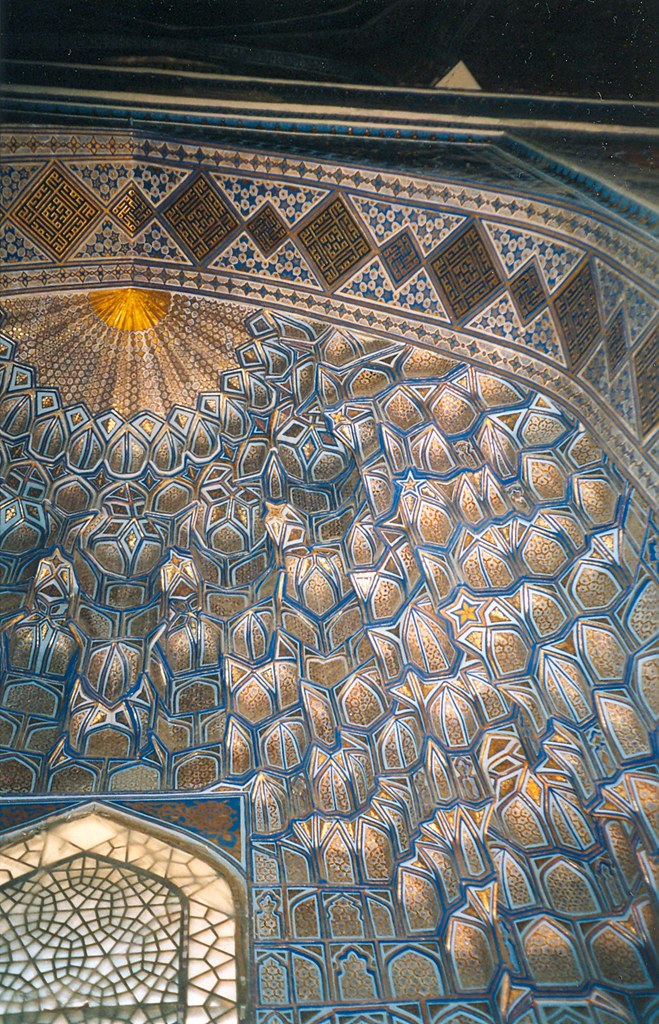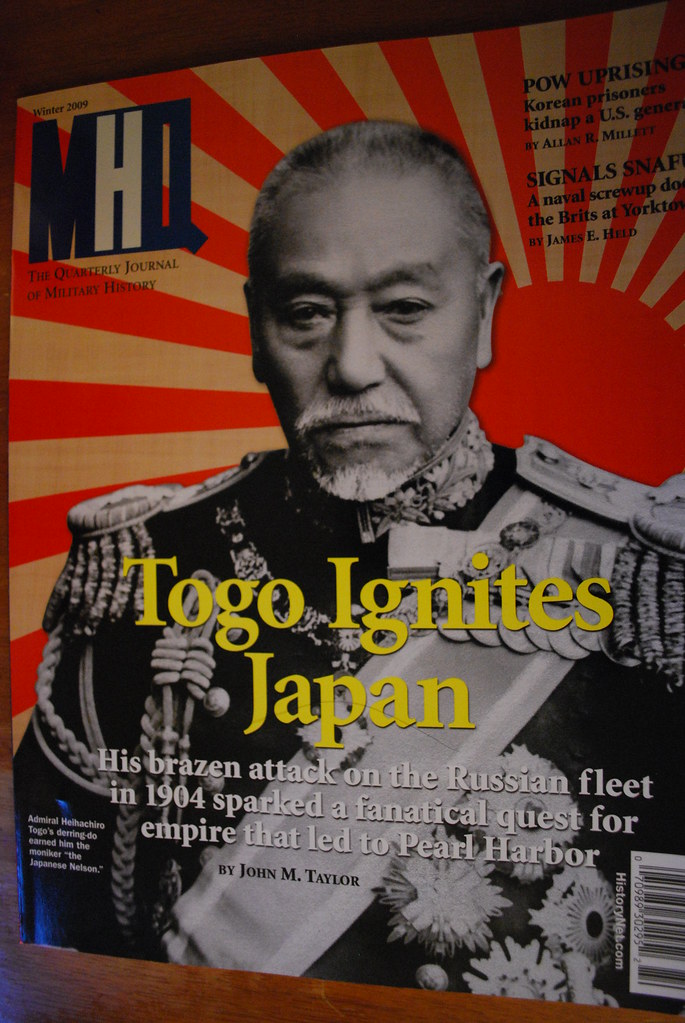MHQ
I've been reading through the Winter 2009 copy of MHQ, The Quarterly Journal of Military History, for several weeks now. It is a Bug thing to buy military publications; however, this time, I was intrigued when I caught a glimpse of the cover.
I would have lightened the image on Photoshop, but my copy is currently out of commission.
My interest in history is rather whimsical, so a journal that spans time and place is more my cup of tea versus buying a 500-page textbook on a given topic. I do not mean to diminish the articles in MHQ as trivial. The articles are composed by authors and History professors with a passion for the topic about which they are writing that I, too, become transfixed with the narrative.
Perhaps one of the reasons for my lack of interest in history classes was because it was about rote memorization of dates, lacking depth, color, and texture. Oh, but I did take Sociology class...and hated it for the same reason. Or it could have been because I was hungry.
Prior to picking up the magazine, I was under the impression that Admiral Togo was a brilliant military leader during WWII. The admiral died in 1934, thus no direct involvement. Of course, those who served under him went on to participate in WWII. The article paints a mural of his birth and training in Britain, and death, concentrating on his campaigns, highlighting tactics used in key confrontations during the Sino-Japanese War, Boxer Rebellion, and Russo-Japanese War.
A related article covered the racist lubki (prints) used as propaganda in Russia during the Russo-Japanese War to garner support for the war that resulted in a shameful blow to the great Russian Navy.
It was fascinating to read about Timur Barlas, also known as Tamurlane, born near Samarqand, Uzbekistan and married to Genghis Khan's great-granddaughter, who prized artists, mainly so they could chronicle his conquests in beautifully drawn and written manuscripts as well as to erect buildings and monuments. He raided as far away as Moscow and Delhi, pillaging towns, and sending the artists to Samarqand. Looking at a few of the colorful drawings, they remind me of flipping through my father's Life Magazine photo books on WWII, just not as ornate.
The article doesn't glorify the destruction, as it is all...history, but details certain works and, in the midst of such devastation, the beauty that flourished as a result of Timur and his descendants' appreciation for the arts.
 Gur-e Amir, Samarqand, Uzbekistan (image from Wikipedia)
Gur-e Amir, Samarqand, Uzbekistan (image from Wikipedia)Gur-e Amir was a mausoleum built for Timur's grandson. Timur built his own mausoleum in Shahr-e Sabz; however, upon his death, he was buried at Gur-e Amir because his mausoleum was inaccessible. I realize that Samarqand has been pillaged quite a number of times so its beauty from the time of Timur has probably seen better days. I would still love to see the ancient city.
What appears to be a recurrent article in each periodical is "Fighting Words," describing the etymology of colloquial words or phrases coined during a particular war. In this issue, the focus is on WWI, e.g., war of attrition, flamethrower, balls to the wall.
I still have more articles to read on the Battle of the Virginia Capes (American Revolutionary War); the North Korean prisoners who took over a compound at Koje-do and kidnapped a US general (Korean War); and Miguel Hidalgo y Costilla (Mexican War of Independence).
It's rare to find a magazine intriguing enough to read cover to cover. Mad Magazine's fold-ups don't count.
- Cassaendra






0 deep thoughts:
Post a Comment